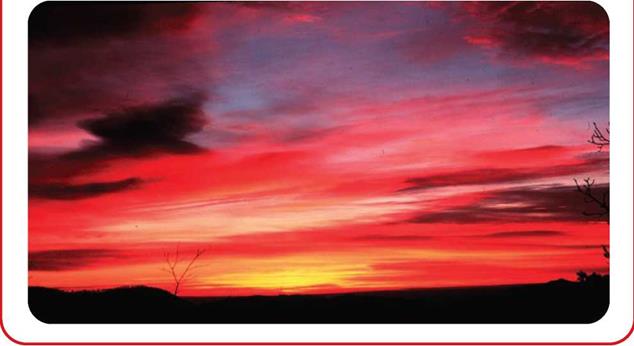The Greenhouse Effect
Energy from the Sun passes through the atmosphere’s layers to warm Earth’s surface. The surface then warms the atmosphere. The warm air rises and draws in more air underneath to replace it. These air currents caused by the Sun and also by the spinning motion of Earth are responsible for the weather.
Some gases in the atmosphere are very good at soaking up warmth instead of letting it escape into space. These gases make the atmosphere warmer overall. The rise in temperature caused by these gases trapping heat is called the greenhouse effect, and the gases that trap the heat are known as greenhouse gases. Water vapor, carbon dioxide, and methane trap the most heat.
Without the greenhouse effect, the world would be about 60°F (33°C) colder than it is now. The world is gradually warming up, however, in a process called global warming. Many scientists believe this is happening because of the increase in greenhouse gases produced
by human activities. When fossil fuels such as coal and oil are burned, they release carbon dioxide, which traps heat.
Depending on how much the atmosphere warms up, global warming could cause droughts in some parts of the world, floods in other parts, and more
![]()
|
![]()
BLUE SKIES AND RED SUNSETS
Air is colorless, so why is a clear sky blue? Sunlight contains all the colors of the rainbow mixed together. As sunlight streams through the atmosphere, it hits air molecules. The molecules scatter the light in all directions, but the blue part of the light is scattered more than the other colors, because its wavelengths are shorter. The sky, therefore, looks blue in every direction.
Brilliant red sunsets are also caused by light scattering. When the Sun is low in the sky just before it sets, sunlight travels more than thirty times farther through the atmosphere to reach the eyes of an observer than it does when the Sun is high in the sky. Most of the blue part of the sunlight is scattered out, leaving the red and orange parts of the light (with their longer wavelengths) to give the sunset those colors.

violent storms everywhere. If a warmer atmosphere melts the polar ice caps, the sea level could rise enough to flood coastal cities. Crops could fail in some places as the climate changes. Many people believe the effects of global warming are already being seen.










